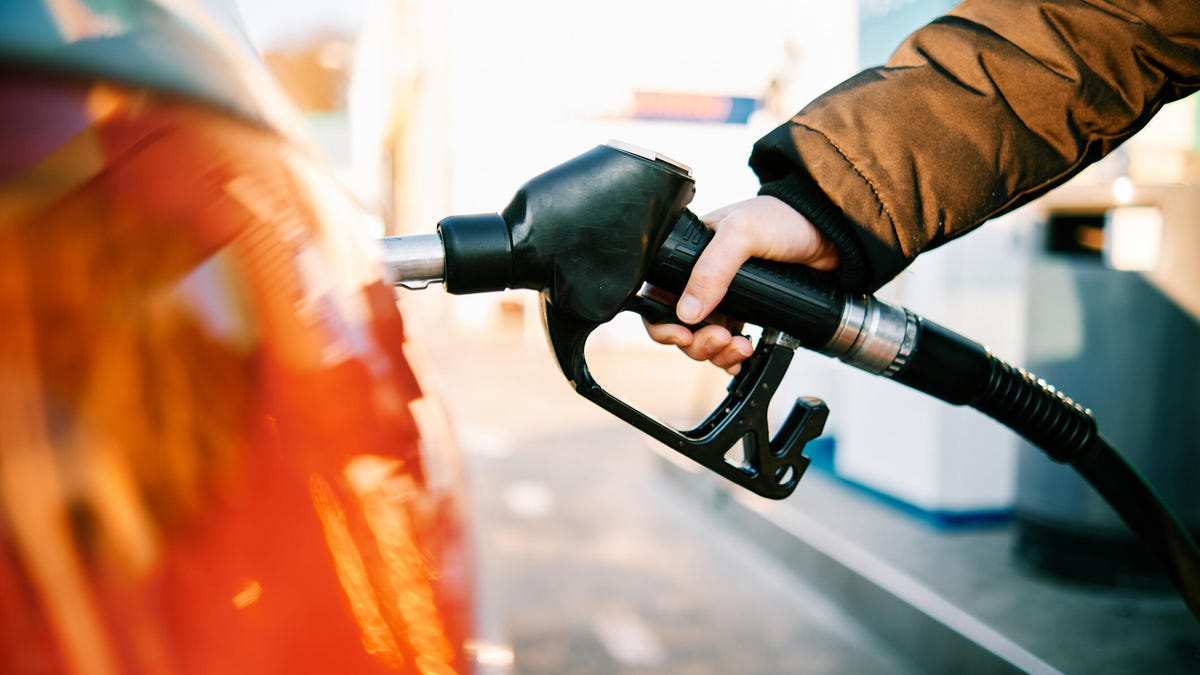Gas Prices Hold Steady After Iran Ceasefire, Despite Dubious $8/Gallon Warnings in California

Early panic pushed crude oil past $81, but prices have since fallen as traders bet the Strait of Hormuz will stay open

Gas prices could go up due to the US-Iran conflict.
Brent crude opened Thursday at $67.83 a barrel, down more than $13 from last week's high of $81, after traders decided the Iran-Israel ceasefire will probably keep the Strait of Hormuz open. It followed US President Donald Trump delivering an all-caps message about oil prices on Monday, less than a day after US and Israeli forces struck three Iranian nuclear sites.
"EVERYONE, KEEP OIL PRICES DOWN. I'M WATCHING!" Trump wrote on his social media platform Truth Social. "DRILL, BABY, DRILL!!! And I mean NOW!!!"
The attacks briefly sent Brent crude, the world's benchmark oil price, above $81 a barrel. Traders drove that price back into the low $70s after Iran retaliated against the US by firing missiles at a US military base in Qatar, a relatively limited response.
What do oil prices mean for drivers?
Crude oil makes up a little more than half of the cost of what drivers pay at the gas pump, and analysts say every $10 hike in oil prices usually nudges the average US gasoline price up by 20 to 25 cents per gallon.
Read more: Best Electric Cars and EVs for 2025
As of June 26, AAA puts the national average for regular gasoline at $3.22 a gallon, with diesel fuel at $3.72. A week ago, regular gasoline was $3.14, so tensions have already tacked on 8 cents. Californians are paying the most, at $4.62, while Texas drivers enjoy the lowest statewide average price at about $2.85.
CNET will track AAA's daily averages and key market benchmarks as long as the Iran standoff threatens fuel costs.
Analysts do warn that the Golden State could be a wild card. If two Bay-Area refineries convert to renewable-fuel production next year, local supply could tighten enough to push prices "as high as $8 a gallon," according to a recent report cited by Patch. State officials, however, say that figure is flat-out false, noting that the projection comes from an industry-funded analysis with no transparent modeling. Stanford economists call any refinery-related bump "negligible."
If Tehran does for some reason follow through on threats to close the 21-mile-wide Strait of Hormuz, which carries roughly 20% of the world's oil, Goldman Sachs warns that the price of Brent crude could leap past $110, a level likely to push the average US pump price over $4.
Traders first bid oil up on fears Iran would shut Hormuz, the world's busiest oil chokepoint. Prices sank once Iran's limited retaliation hit only a US base in Qatar, sparing tankers and energy facilities, and have stayed soft as the cease-fire holds.
If a tanker is hit or the Strait of Hormuz is even partly blocked, experts say supplies could get tight almost instantly. So far, the OPEC-plus oil alliance hasn't called an emergency meeting. Russian President Vladimir Putin says the group doesn't need to act yet, and Saudi Arabia's energy chief says it'll wait to see what the market actually does.
The administration could tap the Strategic Petroleum Reserve if Iran disrupts oil flows, but no steps have been taken so far.
This story originally appeared on: CNet - Author:UK GAG

















